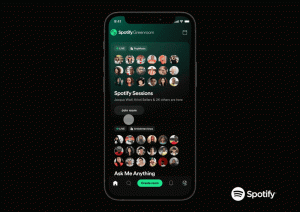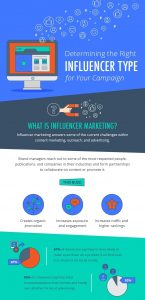Ryan Phelan runs down a list of 10 email crimes that will result in punishment. Learn how to stay free.

I live in Texas, where the highway speed limits are more like minimums than maximums. Our interstates could pass for the Indianapolis 500 (AKA the “Idiot 500” here in Dallas). I contribute to this fast-moving culture because if you obey the law, you’ll get run over.
The other day, I was cruising down the highway at traffic speed (at least 20 MPH over the posted limit), and I got pulled over. It occurred to me as I waited for the cop to run my license plate that I could end up going to jail. That’s definitely not something that would make my mom proud of me.
So when the officer came up to my car window, I didn’t get mad or invent some lame excuse. Instead, I owned up to my speeding. He must have been feeling generous that day because he didn’t even issue a warning. He told me to take it easy and let me go.
10 crimes that will send you to email jail
This incident makes me think about email (of course!). When I talk with clients who are having deliverability problems, especially when sending into Gmail, I call it being in Google Jail.
Lots of things can put you on the wrong side of the law, whether it’s violating an ISP rule or annoying your subscribers and customers.
Why should you fear email jail? Because the sentences are tough, and the appeal process can be arbitrary. Revenue and customer engagement will suffer when you can’t reach subscribers’ inboxes. Getting sprung can be expensive and take your focus away from business as usual.
Here’s my quick list of 10 email fails (some misdemeanors, some felonies) that can put us in email jail and what to do to stay on the right side of the law. If you have one that’s not on my list, follow me on Twitter/X and tweet it to me. I’d love to see what you consider an offense punishable by email jail time.
1. Buying a list
Charges: Fraud, forced entry, coercion.
Sentence: 6 months to life on a blocklist (or several).
This is still one of the top email crimes since I entered the business 25 years ago. People still think email is easy. They say, “Let’s just buy a list and scale up fast.” That is wrong on so many levels (and illegal in many countries) that it defies logic. When you buy a list, you could end up in email jail as soon as you push the “Send” button.
But let’s make it personal. How do you feel when you get email from what is clearly a purchased list? Annoyed, no doubt. Everyone who buys a list does the same thing: They search to see if their names are on it. That tells you this is bad. From deliverability to engagement to ethics to ISP rules, there is nothing good about buying a list.
2. All-image, no-text emails
Charge: Public indecency.
Sentence: One month in email rehab to permanent shunning by unengaged customers and subsequent loss of revenue/engagement.
I block images by default. I’m not the only one who does, either. And I’ve lost count of the emails, sent by top-notch teams from big-name brands, that are just blocks. The only text I can see is the preheader and the footer. They don’t even have alt text on the image to tell you what the email is all about. How frustrating.
I understand the desire to create email works of art that will represent the brand better. But emails are not magazine ads. They’re interactive by nature. Static images rob emails of their engagement potential.
All-image emails give you no opportunity to market to customers with images blocked. You’re committed to a life of batch-and-blast email, which is a crime, too (see next item).
Beyond that, production people say all-image emails are faster to put together and send. But in my perspective, that’s being lazy. Setting up an email using modules that you rearrange, add in, or drop out for different segmentation and personalization is probably just as fast these days as coding an all-image email.
3. Batch and blast
Charge: Customer neglect.
Sentence: Customer ghosting, potentially for life.
There’s no reason to rely solely on batch-and-blast marketing anymore. In a recent talk with marketers, I acknowledged that sometimes you do have to send the same message to all subscribers.
But it doesn’t have to be that way for your entire program. Even basic email sending platforms give you rudimentary tools to differentiate your messages if you have the data to drive them, even if you have an email staff of one. Even sending one personalized or segmented email for every 99 one-to-everyone messages you send is a step in the right direction.
But note that I said it’s a step. It’s not a goal. When you live in a B&B world, you aren’t using email to its full potential. Working toward differentiated messaging is a realistic expectation with today’s technology.
Most importantly, it’s not what your customers want. The tried-and-true reasons customers either unsubscribe, report spam, or simply ghost your emails are lack of relevance and too many emails.
4. Poor/no authentication
Charge: Operating without a license.
Sentence: 6 months or longer in deliverability prison.
Until Google and Yahoo (“Goo-Hoo”) mandated the use of DMARC among other authentication protocols in February 2024, authentication was hit or miss. It was viewed by everyone except deliverability experts as a best practice but not an urgent one.
There were exceptions. My agency always prods our ESP migration clients to get it done during the process. But Goo-Hoo’s mandate requires not only authentication but also that it be done correctly to pass email to the inbox. That included adding an extra step with DMARC.
Not authenticating your email or doing it poorly will almost always land you in email jail and hurt your inbox access. Complicating it are two common organizational problems: People don’t monitor it regularly, nor do email marketers understand and own the process.
You have to keep your eye on your deliverability and make sure it works right. Deliverability used to be a black box of magic. Marketers knew it was there but didn’t understand how it worked. We don’t have that luxury today. Email marketers must understand it and either own the process or have a stake in it.
5. Omitting cross-selling and upselling in transactional messages
Charge: Misappropriation of funds.
Sentence: Fine up to $ 1 million in lost revenue.
Triggered and transactional emails are email money trees. You set them up and run reports to see how much money they made for you overnight.
With the advent of dynamic personalization in emails based on purchases or adjacent products, it’s (almost) criminal that people aren’t using relevant product suggestions in purchase-confirmation emails.
Although international email laws can vary on how much promotional content can go into a transactional email (if any), CAN-SPAM allows up to 20% of a transactional email to include promotional content as a secondary message.
Having the presence of a suggested product in the transactional email promotional potential is a huge motivation to buy and a revenue source. Some companies make 50% of their email revenue on promotional content in transactional emails that represent only 4% of their overall email send volume. That’s a lot of money for not a lot of emails.
This might be a misdemeanor in the eyes of the email law, but the sentence can be stiff: lower revenue now and loss of potential revenue.
6. Running an email program without a strategy
Charge: Incompetence; malfeasance; misappropriation of fund.
Sentence: Budget cutbacks, involuntary commitment to an email asylum.
I am the “strategy over tactics” guy all day long. (I’m also a decent home chef but that’s a column for another day.)
Strategy is the “why” of your email program. Tactics are the “how.” But people gravitate to tactics because they’re easier than doing the heavy lifting that goes into creating an email strategy.
Relying on tactics without having guidance from strategy is a jailable offense because you’re running your program on sending email campaigns without regard for your customers, your users, your audience, your products, your brand, or your company.
You don’t know why your customers give a damn about your brand, products, or email. You have no guidance, plan, or path to success. You don’t know whether the money you spend on shiny new email tools or questionable tactics is paying off in more subscribers or more revenue. That could lead to budget cutbacks.
You also lack realistic goals. Every good company operates on goals. If you don’t create and update your goals, you’re just flying blind with email. What kind of relationship can you have with your customers if you don’t know why they connect with you and don’t have goals to improve that connection or a plan to achieve those goals?
7. No opt-down option to manage unsubscribes
Charge: False imprisonment, gross negligence.
Sentence: High acquisition costs to replace unsubscribed, unengaged, or spam-complaining subscribers.
I am a big proponent of the opt-down. It lets you offer options for reducing frequency or updating email permissions and preferences to subscribers who are at the point of unsubscribing.
Opting down addresses the main reason why subscribers leave, as I mentioned in discussing batch-and-blast emailing: too many emails or too little relevance. If you don’t offer them options for solving the problems, you are missing an opportunity to continue engaging with them.
You can find yourself in email jail if you don’t give them the chance to change their preferences right when they’re thinking about leaving. You’re losing subscribers, and you have no insight into why they’re leaving.
Plus, you aren’t giving them a way to solve for the reasons they want to unsub. That amounts to gross negligence considering how much time and company money you put into acquiring those customers.
8. Relying on the open rate as a success metric
Charge: Conspiracy to defraud and tampering with evidence.
Sentence: 100% open rate for life.
Email isn’t dead, but opens are. They’ve always been unreliable given the vagaries of HTML and the way different email clients and subscriber settings manage them. But now, Apple’s Mail Privacy Protection feature has made them even less directional than before.
Still, I talk all the time with marketers who can’t understand why their open rates don’t translate into email success.
So, once again for everybody waiting to be booked on this email crime:
The open rate is not a metric you can depend on to forecast anything. They are directional. Use them to indicate trends. What should you use instead? Clicks and downstream actions (purchase/conversion, etc.) tied to your goals are more reliable metrics.
9. Running an RFP without help
Charge: Obstruction.
Sentence: A new ESP you hate.
The tech landscape for ESPs has changed dramatically over the last 10 years. With the advent of AI and data availability, merging of ESPs, CRMs, and CDPs, it has become even more complex. It’s not just about the ability to send messages but to consider all the options for cross-channel marketing and extending marketing beyond email. That heightened complexity makes the search for new technology even more daunting.
Yes, you can create requests for proposals and send them out yourself. However, creating a workable RFP that reflects your tech needs, data and employee resources, present situation, and growth potential can take you away from the business of getting email done.
And yes, you could have someone else in the company do it, like your procurement team. But that could also be a problem because they don’t know about email or understand what factors are important beyond cost.
When running an RFP, an independent voice can guide you through the options, consider your pain points, and choose vendors who are most likely to help you solve them. You likely will recoup the money you spend on RFP management in the savings this team can negotiate for you in the sales process.
10. Migration to a new ESP without a blueprint
Charge: Inciting a riot.
Sentence: No less than 2 years’ migration process with associated organizational chaos and loss of revenue.
Migrations can be messy. One reason is many companies don’t go through major tech migrations often.
Moving to a new ESP can be one of your most consequential actions. You aren’t just unplugging from one platform and plugging into the new one. Migration includes many logistical processes, people, dependencies, and data. You need a plan so you understand what you’re moving.
Without it, you will create the riot that I mentioned above. It will be years of disruption. You could overlook essential information and processes. Everyone will be angry at the chaos and disorganization. The result? A riot that could take years to clean up.
Wrapping up
Email jail is scary, and not just because of the people you encounter there. Unlike my traffic stop, you might not realize you’re in jail until you suddenly notice your numbers are falling or you get a failure notice that your emails are on a blocklist or improperly authenticated.
And it’s also so unnecessary! Every crime I listed here could be solved before the email cops close in and shut you down. But you have to want to stay out of jail. And sometimes you can end up there even when you do everything right.
Use my list to check your program for potential crimes. Prioritize the ones you find and fix them. And if you need a good email lawyer, you know where to find me.
The post Stop! Or go directly to email jail appeared first on MarTech.
(10)






